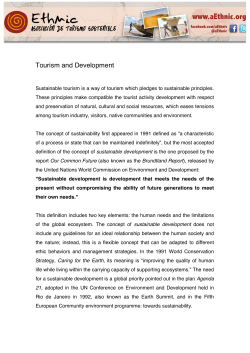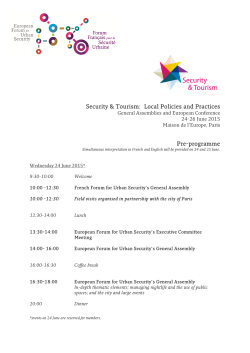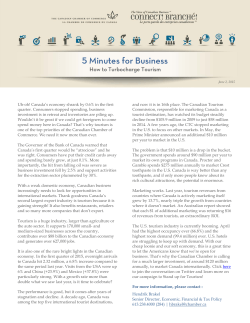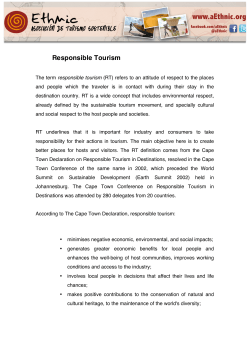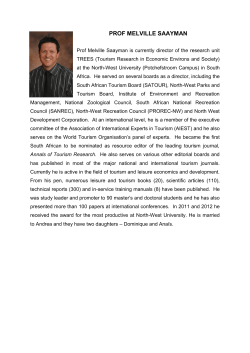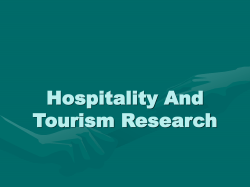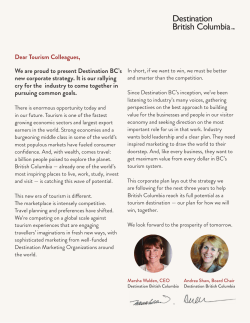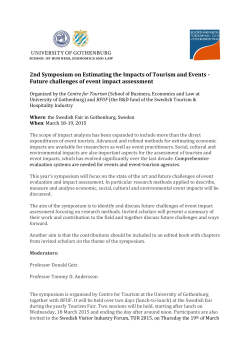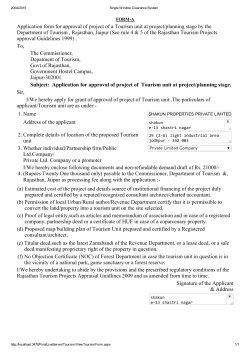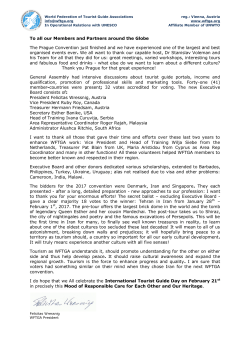
Guidelines for Summarizing
From Swales, J., & Feak, C. (2004). Academic writing for graduate students. Ann Arbor: Michigan University Press. Guidelines for Writing a Summary 1. Skim the text; try to divide it into sections. 2. Determine the organization of the text (e.g., problem-solution, general-specific) and identify important information. 3. Read the text, highlighting important information. 4. In your own words, write down the main points of each section (in one sentence). 5. Write down the key supporting points for the main ideas. 6. Do not paraphrase specialized vocabulary and technical terms. 7. Make sure your summary reads smoothly. Use transition devices to make it flow. Exercise Step 1. Read the text "Selling Cities" and underline the parts you think are important to answer the questions below. All citations have been removed for simplicity. What is the potential impact of meetings tourism on a city? Does the meetings tourism market seem like a reasonable market for cities in economic trouble to pursue? Step 2. In the margins, write what each paragraph is about. Step 4. Read Draft Summary 1 and comment on it. The sentences have been numbered for your convenience. How would you evaluate this summary? Step 5. Read Draft Summary 2. Is it better than Draft Summary 1? How is it organized? Selling Cities: Promoting New Images for Meetings Tourism (from Bradley, Hall, and Harrison, 2002) Meetings tourism, which we define as travel associated with attendance at corporate or association meetings, conferences, conventions or congresses or public or trade exhibitions, has emerged as a significant subsection of the tourist industry both in terms of volume oftravel and expenditure generated. "Meetings" demonstrate enormous variety, ranging from small business meetings of a few participants to large conventions of, for example, professional associations which might attract in excess of20,000 delegates. The range oflocations within which these meetings take place is also broad, including such sites as hotels, universities, sports venues, and especially built convention centers. The meetings tourism market has been vigorously pursued by many former industrial cities in Europe and the US as part of their strategies of post-industrial urban regeneration. This market offers a number of obvious attractions to such cities, not least the rapidity of its growth during the 1970s and 1980s, the very period during which many cities were suffering contractions in their industrial base. Figures for the USA suggest the business conference industry almost doubled during the 1980s. The growth is particularly marked for international conferences, which bring the greatest financial returns for host cities. In many European cities the economic contributions ofbusiness tourism outweigh those from leisure tourism by two to three times, making it both a seemingly appropriate and rewarding sector for former manufacturing cities to pursue. Meetings tourists are high spending and hence the market is able to generate high levels of investment in cities and regions. Although the myth of the bottomless expense account is somewhat exaggerated, meetings tourists are major users ofthe entertainment and accommodation facilities of the locations they visit. It has been estimated, for example, that the International Rotary Meeting at the International Convention Center in Birmingham, UK, attracted 23,000 delegates resulting in the spending of almost $40 million in the city during the meeting, much of which remained in the local market. The potential for ~irect and indirect job creation associated with meetings tourism has been recognized as high. A study of the potential job creation effects of a convention center in Birmingham, UK, was crucial to the decision by the local authority to pursue the development. The study estimated that while only 125 jobs would be created directly in the center itself, almost 2,000 indirect jobs would result from its development. Success in this market also brings a number of nonfinancial rewards associated with image and profile enhancement, the improvement of decaying districts and city center landscapes, and the generation of civic pride among residents. The zeal with which some cities have developed facilities to attract meetings tourists during the 1980s suggests that it was seen as something of a panacea for the problems that have come to affect them. However, the pursuit of the meetings tourist market certainly incurs costs, for example, the long-term financial burden on local authorities both to cover the costs of construction and to service the typical year-on-year financial deficits of such facilities. It also brings with it potential problems, such as a vulnerability to cut backs during recession and the fact that at national levels, and sometime regional levels, the competition between cities for meetings often results in enough profits to just cover expenses. Despite potential risks, many city governments see meetings tourism as a good way to make the transition into a post-industrial economy. Draft Summary 1 [1] Meetings tourism is travel associated with attendance at cotporate or association meetings, conferences, conventions, or congresses or public or trade exhibitions. [2] It has become a significant subsection ofthe tourist industry both in terms of the number of tourists and the money spend. [3] The meetings tourism market has been vigorously pursued by many former industrial cities that are aiming for urban regeneration. [4] The meetings tourism market offers attractions to such cities, especially its growth during the 1970s and 1980s, when many cities were suffering from economic problems with their industrial base. [5] The expansion in meetings tourism is especially outstanding for international conferences, which get the highest economic rewards for entertaining cities. [6] In many European cities the economic profits ofbusiness tourism are two to three times greater than those from leisure tourism. [7] Because meetings tourists spend a lot of money, cities have funds to heavily invest in themselves. (8] Meetings tourism has the potential for direct and indirect job creation. [9] One study estimated that jobs can be created directly and indirectly from its development. [10] Apart from generating funds, meetings tourism can also improve image and profile enhancement, improve decaying districts and city center landscapes, and generate civic pride among residents. [11] However, the meetings tourism market certainly takes some risk because cities have to pay for the construction and upkeep of facilities, a weak economy, and competition from other cities. [12] For example, there may not be a profit. [13] Many city governments see meetings tourism as a good way to make the transition into a post-industrial economy. Draft Summary 2 According to Bradley, Hall, and Harrison (2002), meetings tourism refers to "travel associated with attendance at corporate or association meetings, conferences, conventions, or congresses, or public or trade exhibitions" (p. 14). The meetings tourism market has become increasingly important to cities that once depended on heavy industry for their economic strength. futerest in meetings tourism has grown for three main reasons. First, the average meetings tourist spends two to three times more money than a typical leisure tourist does. If a city hosts a "mega" meeting of tens ofthousands of participants, the financial rewards can be considerable. Second, meetings tourism can create jobs in a local economy. For example, the meeting facilities require workers, while other jobs may be created in hotels, restaurants, and other entertainment facilities. Finally, meetings tourism may lead to cities receiving a "facelift" with landscapes being improved and city centers being revitalized, which may in tum improve civic pride. City improvements may also encourage meetings tourists to return to a host city at a future date for business, pleasure, or even a change in residence. Despite these important advantages, investment in meetings tourism is not risk-free. illvestment in facilities may impose a long-term financial burden on cities that must face competition from many other cities in the market. Thus, cities may invest heavily in· ~eetings facilities, but may not reap the expected benefit. Despite the potential concerns, a good meetings tourism strategy has the potential to revive an ailing post-industrial city. As a result, this industry will likely continue to grow.
© Copyright 2025
